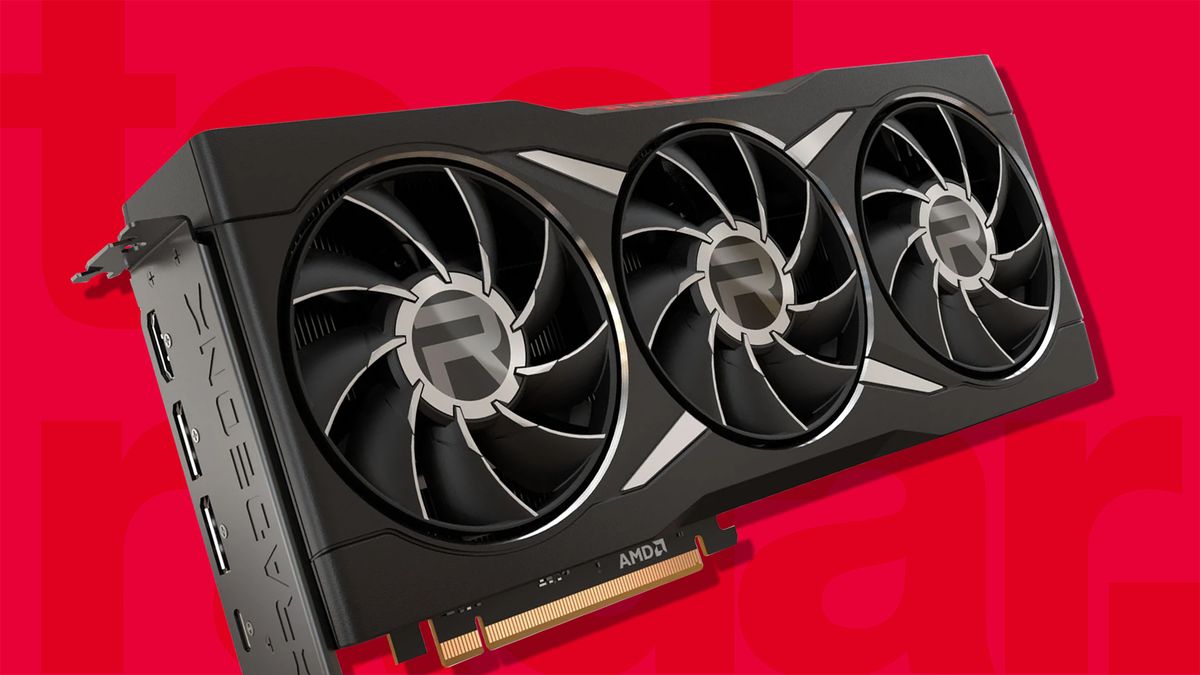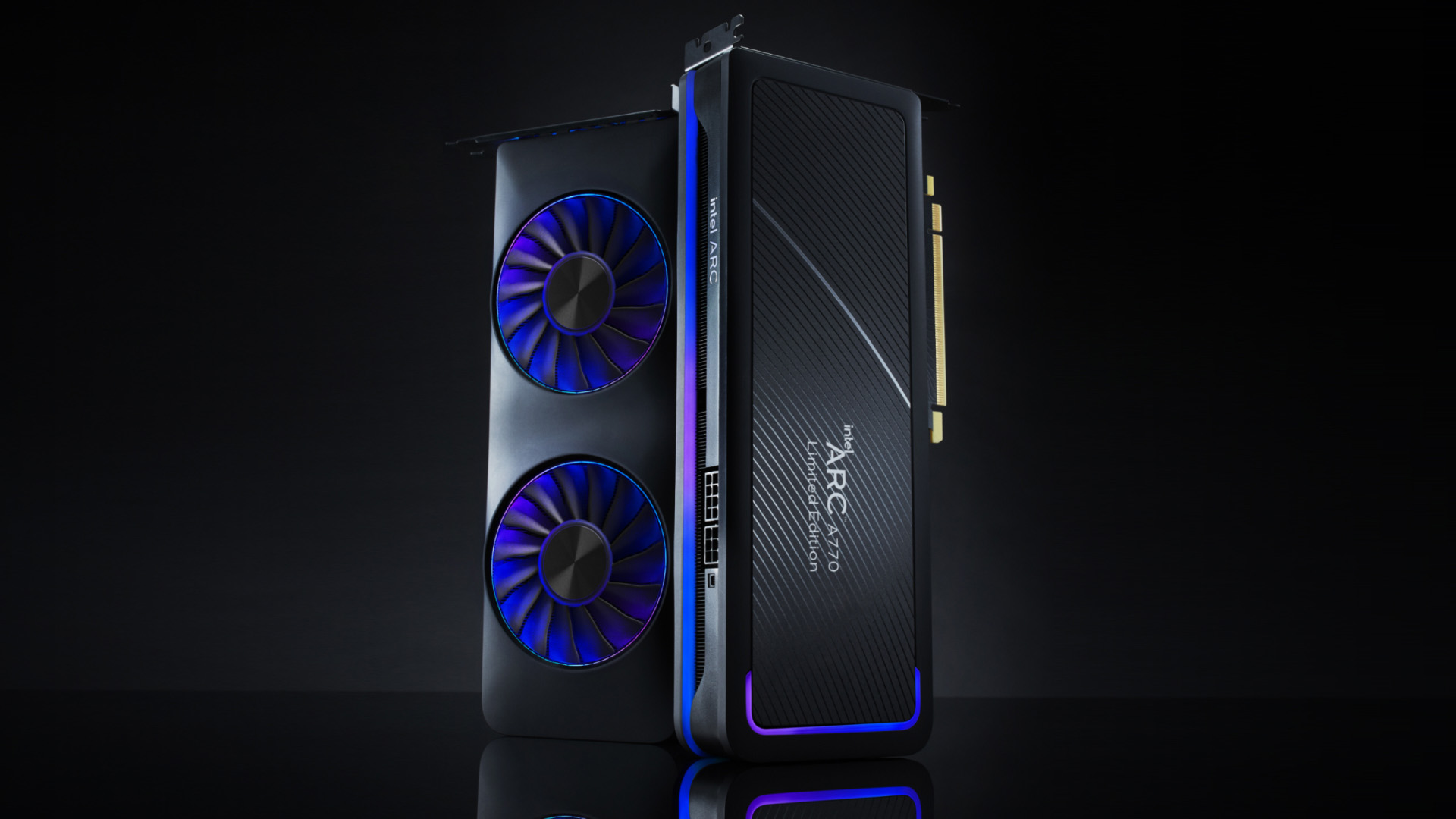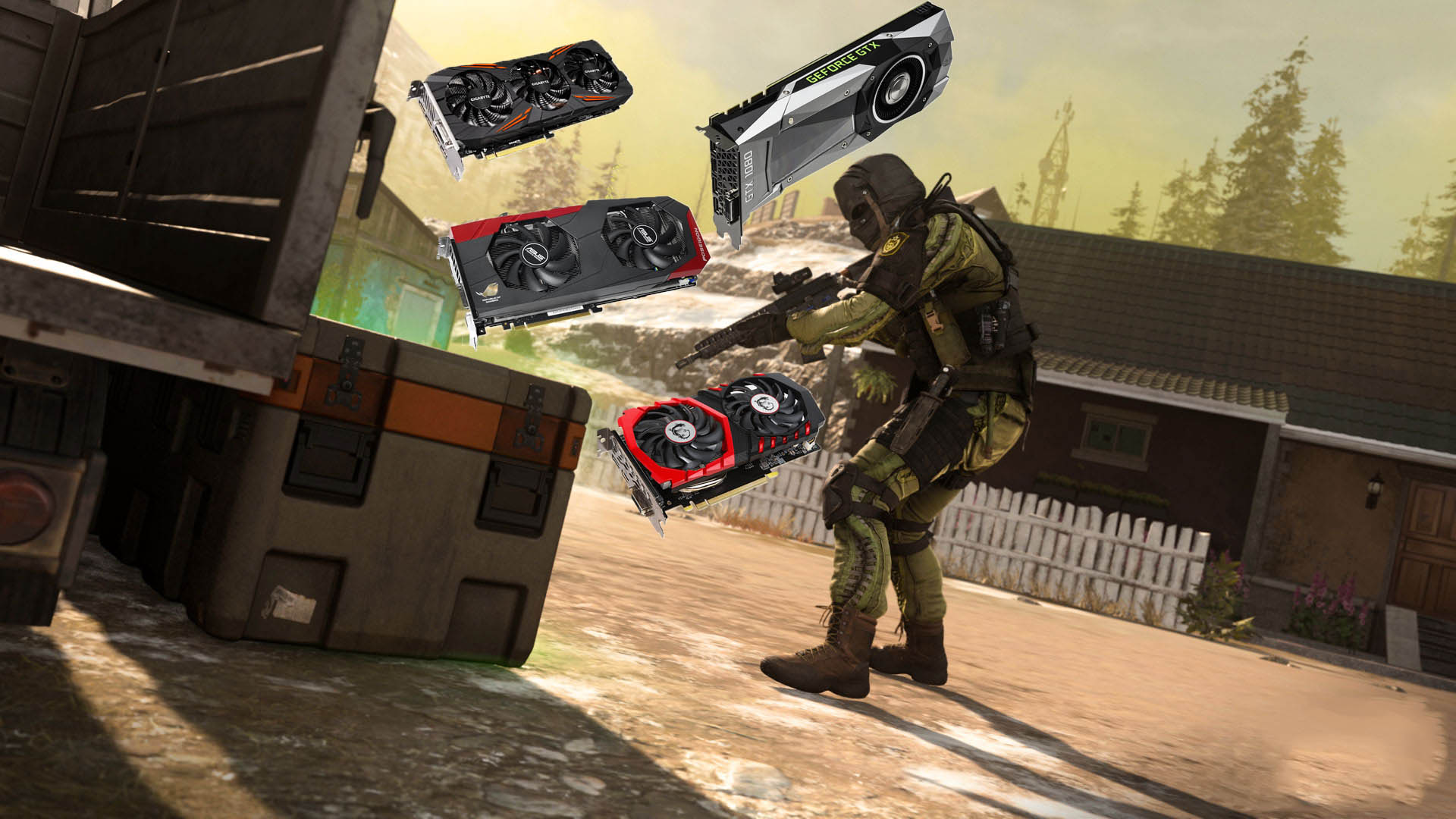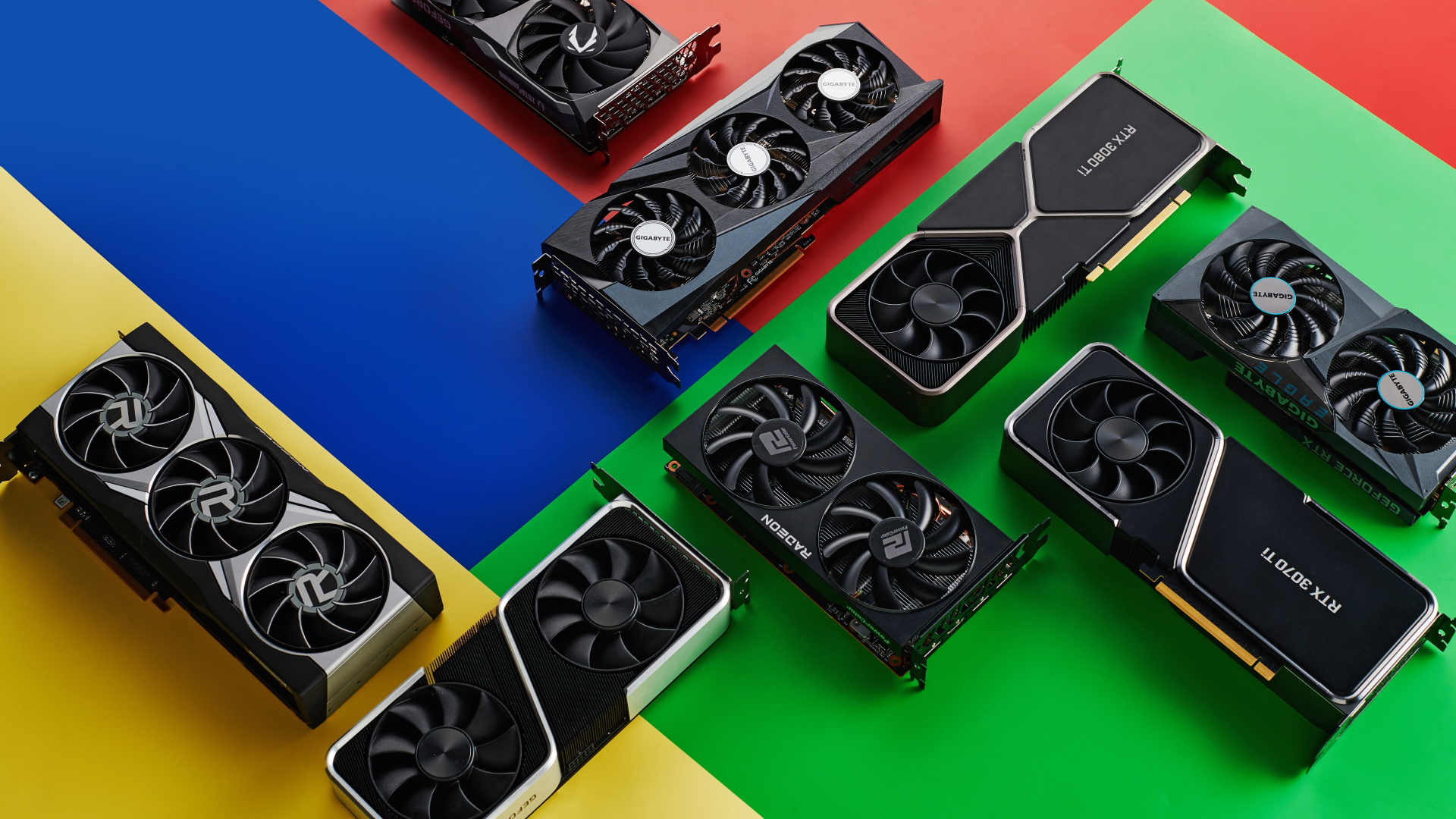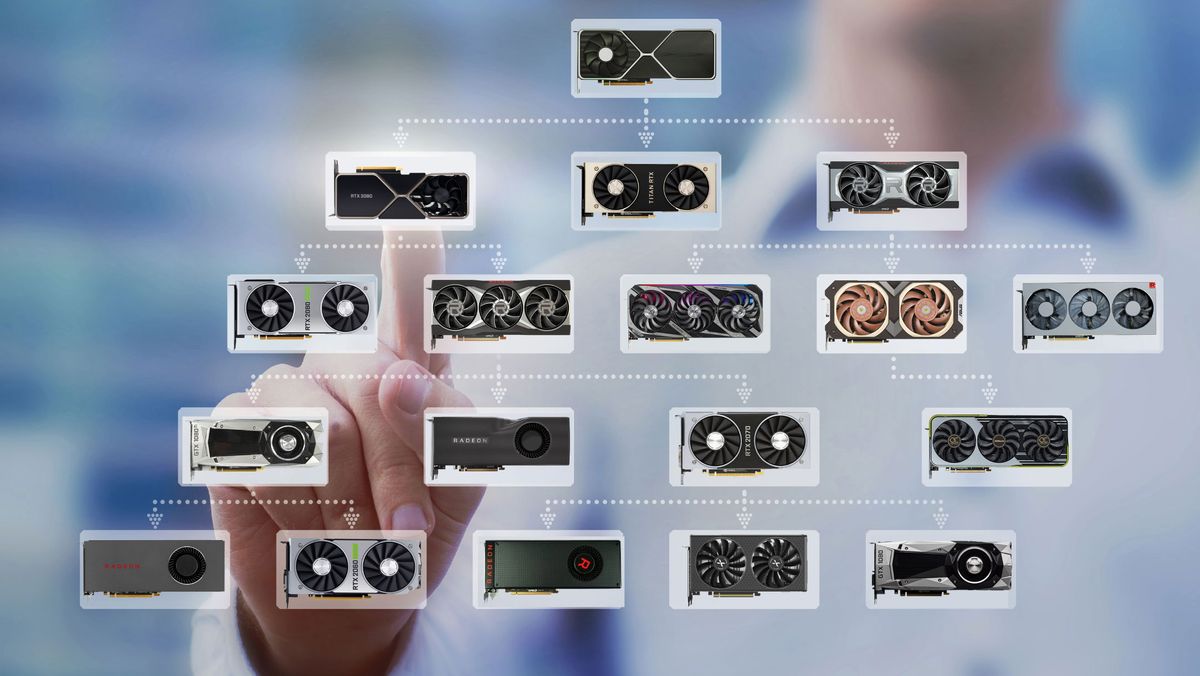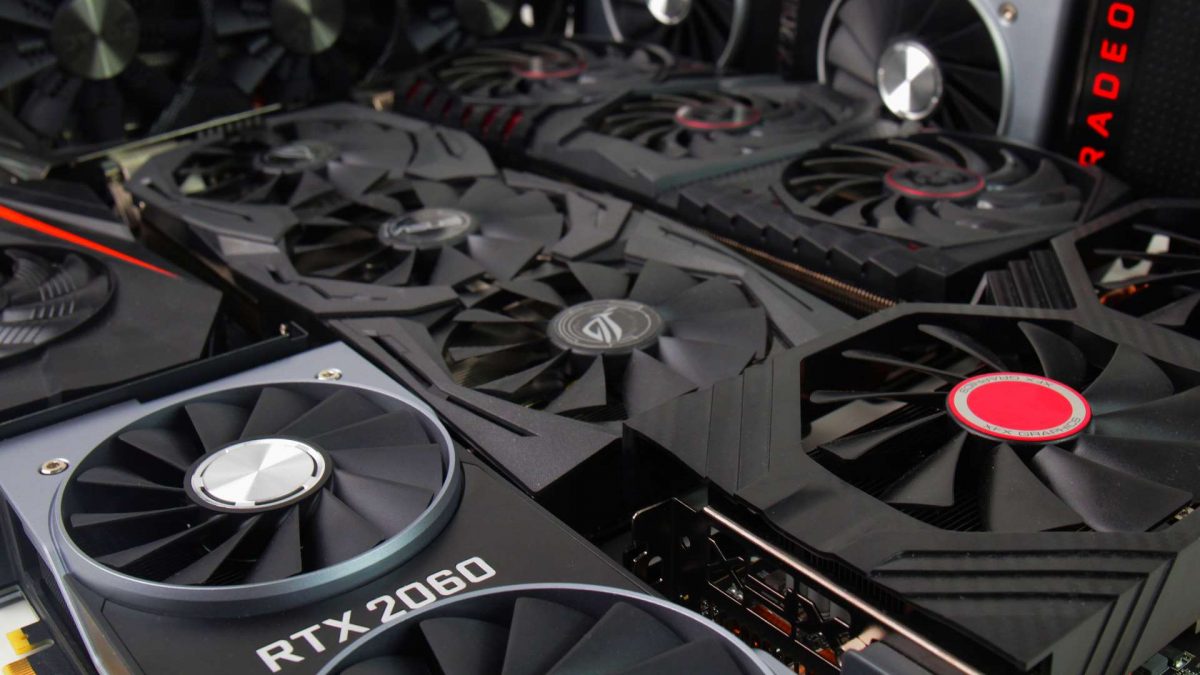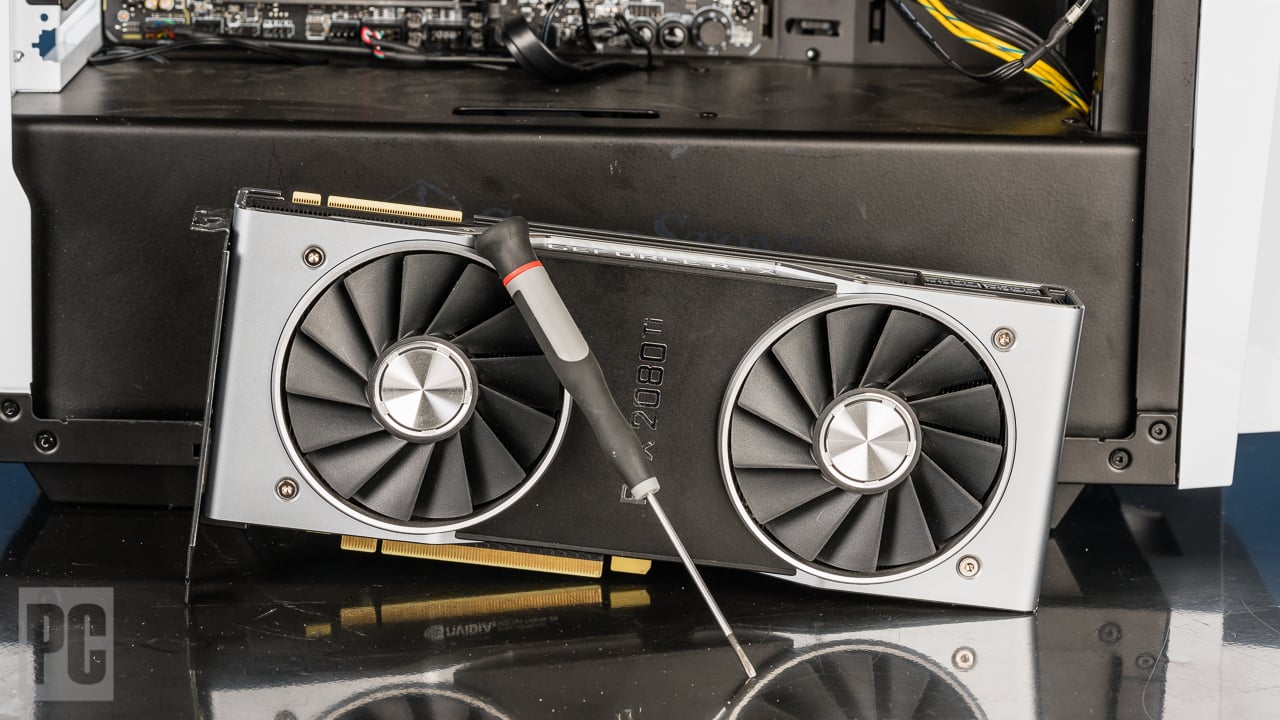Introduction
The advancement of technology has transformed the way we interact with our computers, especially when it comes to visual experiences. Whether you’re a gaming enthusiast, a video editor, or a 3D rendering artist, having a powerful and efficient graphics card can significantly enhance your overall computing experience.
Graphics cards, also known as GPU (Graphics Processing Unit), are responsible for rendering images, videos, and animations on your computer screen. They are installed in the expansion slots of your motherboard and work in conjunction with the CPU (Central Processing Unit) to handle the complex graphics calculations required for various tasks.
With a wide range of graphics card options available in the market, it can be overwhelming to choose the best one for your specific needs. Factors such as budget, performance, compatibility, and intended usage play a crucial role in making the right decision.
In this guide, we will explore the various aspects of graphics cards and discuss the top brands, as well as the best graphics cards for gaming, video editing, 3D rendering, VR, and budget gaming. Whether you’re a professional or a casual user, this comprehensive guide will help you make an informed decision and find the perfect graphics card that suits your requirements.
Graphics Card Basics
Before diving into the details, let’s start with the basics of a graphics card. Understanding these fundamentals will help you make a more informed decision when selecting the right graphics card for your computer.
A graphics card is an expansion card that connects to your computer’s motherboard and is responsible for processing and rendering images, videos, and animations. It consists of several key components:
- GPU (Graphics Processing Unit): This is the heart of the graphics card and is responsible for executing the complex calculations required to render graphics.
- VRAM (Video Random Access Memory): This is the dedicated memory on the graphics card that stores the visual data being processed.
- Heat Sink and Cooling Fan: Graphics cards can generate a significant amount of heat, so they are equipped with heat sinks and cooling fans to keep them operating at optimal temperatures.
- Outputs: Graphics cards are equipped with various output ports, such as HDMI, DisplayPort, and DVI, to connect to monitors and other display devices.
Graphics cards come in different sizes and form factors, such as PCIe (Peripheral Component Interconnect Express) cards and integrated graphics chips. The PCIe cards are more powerful and suitable for demanding tasks like gaming and professional graphics work, while integrated graphics chips are built into the motherboard and are more basic in performance.
When choosing a graphics card, it’s essential to consider factors such as compatibility with your motherboard, power requirements, and the specific purpose for which you will be using the card. Now that we have covered the basics, let’s move on to the next section, where we will discuss the key factors to consider when selecting a graphics card.
Factors to Consider When Choosing a Graphics Card
Choosing the right graphics card can be a daunting task, given the wide variety of options available in the market. However, by considering the following factors, you can narrow down your choices and find the perfect graphics card for your needs:
- Performance: The performance of a graphics card is one of the most critical factors to consider. It determines how well the card can handle demanding tasks like gaming, video editing, and 3D rendering. Look for a card with a high number of CUDA cores (for NVIDIA cards) or Stream Processors (for AMD cards) and a robust clock speed for optimal performance.
- Memory: The amount of VRAM (Video Random Access Memory) on a graphics card is crucial, especially for tasks that involve working with large textures or complex scenes. Higher VRAM capacity allows for smoother performance and better visual quality.
- Compatibility: Ensure that the graphics card you choose is compatible with your motherboard’s interface, whether it’s PCIe or another type. Check the available expansion slots on your motherboard and make sure the card you select fits properly.
- Power Requirements: Graphics cards consume a significant amount of power, so you must choose a card that your power supply unit (PSU) can handle. Check the recommended PSU wattage specified by the manufacturer and ensure that your PSU meets or exceeds that requirement.
- Connectivity: Consider the output ports available on the graphics card and ensure they match the display devices you plan to use. Common ports include HDMI, DisplayPort, and DVI.
- Budget: Set a budget for your graphics card purchase and look for options that offer the best performance within your budget range. Keep in mind that higher-end cards tend to be more expensive but offer superior performance.
By considering these factors, you can shortlist the graphics cards that align with your requirements and make an informed decision. In the next sections, we will delve into the top graphics card brands and their offerings, as well as explore the best graphics cards for specific purposes such as gaming, video editing, 3D rendering, VR, and budget gaming.
Top Graphics Card Brands
When it comes to graphics cards, several brands have established themselves as leaders in the industry, known for their performance, reliability, and innovation. Let’s take a look at some of the top graphics card brands:
- NVIDIA: NVIDIA is a renowned name in the graphics card market and is known for its powerful and cutting-edge GPUs. Their GeForce series, including the GTX and RTX models, offer exceptional performance for gaming, content creation, and professional applications.
- AMD: AMD is another prominent player in the graphics card industry, well-regarded for its Radeon series of GPUs. AMD graphics cards are known for their excellent value for money and are popular among gamers and multimedia enthusiasts.
- ASUS: ASUS is a well-known brand that manufactures a wide range of computer components, including high-quality graphics cards. Their ROG (Republic of Gamers) series is highly regarded among gamers for its exceptional performance and innovative features.
- MSI: MSI is a leading manufacturer of graphics cards, offering a wide range of options to cater to different user requirements. Their cards are known for their superior cooling solutions, overclocking capabilities, and stylish designs.
- Gigabyte: Gigabyte is a trusted brand that produces reliable graphics cards suitable for a variety of applications. They offer a range of options, from entry-level to high-end models, ensuring there is something for everyone.
These are just a few of the top brands in the graphics card market. Each brand has its unique features, designs, and strengths, so it’s essential to consider your specific requirements and budget when selecting a graphics card.
In the upcoming sections, we will explore the top offerings from NVIDIA and AMD, two of the most prominent GPU manufacturers, as well as discuss the best graphics cards for gaming, video editing, 3D rendering, VR, and budget gaming.
NVIDIA Graphics Cards
NVIDIA is a leading manufacturer of graphics processing units (GPUs) and is widely recognized for its high-performance graphics cards. NVIDIA offers a range of options tailored to different user needs, from gamers to content creators and professionals.
One of NVIDIA’s popular graphics card series is the GeForce lineup. It encompasses both the GTX and RTX series, each offering unique features and capabilities. The GTX series is known for its excellent gaming performance, while the RTX series introduces ray tracing technology for more realistic lighting and reflections in supported games.
Among the standout models in the GeForce lineup, the NVIDIA GeForce RTX 3080 and RTX 3090 are highly sought after by gamers and professionals alike. These cards feature advanced architecture, high VRAM capacity, and impressive ray tracing capabilities, delivering unparalleled performance for gaming, video editing, and 3D rendering.
For gamers looking for a more budget-friendly option, the NVIDIA GeForce GTX 1660 Super and GTX 1660 Ti offer excellent performance at a more affordable price point. These cards provide smooth gameplay for popular titles and are suitable for 1080p gaming.
It is important to note that NVIDIA provides comprehensive driver support and regularly releases updates to improve performance and compatibility. This ensures that NVIDIA graphics card users have a reliable and up-to-date experience.
When choosing a NVIDIA graphics card, consider factors such as your specific requirements, budget, and desired level of performance. Additionally, pay attention to the power requirements and make sure your power supply unit can handle the graphics card’s power consumption.
In the next sections, we will explore the offerings from AMD, another major player in the graphics card market, as well as delve into the best graphics cards for gaming, video editing, 3D rendering, VR, and budget gaming.
AMD Graphics Cards
AMD is a well-respected player in the graphics card market, known for its Radeon series GPUs. AMD graphics cards are popular among gamers and content creators for their competitive performance and value for money.
One of the standout series in AMD’s lineup is the Radeon RX series. This series offers a range of options to cater to different user needs and budgets. The Radeon RX 6000 series, including models like the RX 6800 and RX 6900 XT, provides excellent gaming performance, delivering smooth gameplay even in demanding titles at high resolutions.
For those looking for budget-friendly options, the Radeon RX 500 series, specifically the RX 570 and RX 580, offer excellent value for money and are suitable for 1080p gaming.
AMD is also known for its focus on software support and features. Their Radeon Software provides users with a suite of tools to customize graphics settings, monitor performance, and optimize gaming experiences.
When considering an AMD graphics card, it’s important to check compatibility with your system, particularly the power requirements and available PCIe slots. AMD offers various models with different power requirements, so make sure your power supply unit can handle the card’s power consumption.
AMD’s Radeon series graphics cards are known for their reliability, performance, and competitive pricing. Whether you’re a gamer or a content creator, AMD has options that can meet your needs.
In the following sections, we’ll explore the best graphics cards for specific purposes, including gaming, video editing, 3D rendering, VR, and budget gaming, helping you make an informed decision based on your requirements.
Integrated Graphics vs Dedicated Graphics Cards
When it comes to graphics processing, you have two primary options: integrated graphics and dedicated graphics cards. Understanding the differences between these two options is essential in determining which one suits your needs.
Integrated Graphics: Integrated graphics, also known as onboard graphics, refers to a graphics processing unit (GPU) embedded within the computer’s CPU. This setup is common in most consumer-grade computers, such as laptops and entry-level desktops. Integrated graphics utilize a portion of the system’s RAM for graphics processing.
Integrated graphics are suitable for basic computing tasks like web browsing, document editing, and media playback. They can handle tasks that do not require significant graphical power but may struggle with graphically demanding applications, including modern games and complex 3D rendering.
Dedicated Graphics Cards: Dedicated graphics cards, on the other hand, are separate components that are connected to the motherboard through expansion slots, typically PCIe (Peripheral Component Interconnect Express). These cards have their own dedicated memory (VRAM) and higher processing power, making them ideal for demanding tasks like gaming, video editing, and 3D rendering.
Dedicated graphics cards offer better graphical performance, allowing for higher resolutions, smoother frame rates, and more realistic visual effects. They also come with additional features like hardware acceleration, which can significantly enhance graphics-intensive applications.
One advantage of dedicated graphics cards is the ability to upgrade or replace them without having to replace the entire computer. However, they are typically more expensive than systems with integrated graphics, and installation may require additional power and cooling considerations.
When choosing between integrated graphics and dedicated graphics cards, consider the intended use of your computer. If you primarily engage in tasks that require minimal graphical power, integrated graphics may suffice and provide a cost-effective solution. However, if you are a gamer, content creator, or work with graphics-intensive applications, a dedicated graphics card is recommended for optimal performance.
In the following sections, we will explore the best graphics cards for gaming, video editing, 3D rendering, VR, and budget gaming, helping you find the right graphics card for your specific needs.
Best Graphics Cards for Gaming
Gaming enthusiasts know the importance of a powerful graphics card in delivering a seamless and immersive gaming experience. Here are some of the best graphics cards for gaming:
- NVIDIA GeForce RTX 3080: The RTX 3080 is an excellent choice for gamers who demand top-of-the-line performance. With its advanced architecture and high VRAM capacity, this card can handle even the most demanding games at 4K resolution with ray tracing enabled.
- AMD Radeon RX 6800 XT: The RX 6800 XT offers impressive gaming performance with its powerful RDNA 2 architecture. It provides a fantastic balance of price and performance, delivering smooth gaming experiences at high resolutions and settings.
- NVIDIA GeForce RTX 3070: The RTX 3070 is an outstanding option for high-performance gaming at a more affordable price. It offers excellent ray tracing capabilities and delivers smooth gameplay at 1440p resolution.
- AMD Radeon RX 6700 XT: The RX 6700 XT is a great choice for gamers who want high-quality performance at 1440p resolution without breaking the bank. It offers impressive ray tracing and DLSS technology support.
- NVIDIA GeForce GTX 1660 Super: For budget-conscious gamers, the GTX 1660 Super is an excellent option. It provides solid 1080p gaming performance at an affordable price.
When selecting a graphics card for gaming, consider factors such as your display resolution, desired frame rates, and budget. It’s also crucial to ensure that your power supply unit can handle the power requirements of the chosen graphics card.
The best graphics card for gaming ultimately depends on your specific preferences and the demands of the games you play. Whether you’re aiming for ultra-high resolutions or seeking to maximize frame rates, there is a graphics card available to suit your needs.
In the next sections, we will explore the best graphics cards for video editing, 3D rendering, virtual reality (VR), and budget gaming.
Best Graphics Cards for Video Editing
Video editing is a demanding task that requires robust hardware, including a powerful graphics card, to handle the complex processing involved. Here are some of the best graphics cards for video editing:
- NVIDIA GeForce RTX 3090: The RTX 3090 is the flagship graphics card from NVIDIA, offering exceptional performance for video editing. With its massive VRAM capacity and efficient CUDA cores, it can handle high-resolution video editing and real-time rendering with ease.
- AMD Radeon RX 6900 XT: The RX 6900 XT from AMD is another top-tier option for video editing. It provides excellent performance for handling high-resolution footage and complex effects, making it ideal for professional video editors.
- NVIDIA GeForce RTX 3080: The RTX 3080 is a powerful graphics card that delivers excellent video editing performance. With its high VRAM capacity and impressive ray tracing capabilities, it can handle demanding editing tasks seamlessly.
- AMD Radeon RX 6800 XT: The RX 6800 XT is a high-performance graphics card from AMD that offers remarkable video editing capabilities. Its powerful architecture and efficient rendering make it suitable for handling 4K video editing and post-production tasks.
- NVIDIA GeForce GTX 1660 Super: For budget-conscious video editors, the GTX 1660 Super is a solid choice. While not as powerful as the high-end options, it still offers smooth editing performance for 1080p and some 4K video editing.
When choosing a graphics card for video editing, consider factors such as the software you use, the resolution of your footage, and the complexity of your projects. Additionally, ensure that your power supply unit can handle the power requirements of the selected graphics card.
The best graphics card for video editing ultimately depends on your specific needs, budget, and the level of performance you require for your projects. With the right graphics card, you can significantly improve rendering times and overall productivity in your video editing workflow.
In the next sections, we will explore the best graphics cards for 3D rendering, virtual reality (VR), and budget gaming.
Best Graphics Cards for 3D Rendering
3D rendering is a computationally intensive task that requires powerful hardware, including a high-performance graphics card, to handle complex calculations and produce realistic visuals. Here are some of the best graphics cards for 3D rendering:
- NVIDIA GeForce RTX 3090: The RTX 3090 is a top-tier graphics card that offers exceptional performance for 3D rendering. With its high CUDA core count and large VRAM capacity, it can handle complex scenes and ray tracing effects efficiently.
- AMD Radeon RX 6900 XT: The RX 6900 XT from AMD is another excellent choice for 3D rendering. It provides high-performance computing capabilities and is optimized for professional applications, making it ideal for rendering complex 3D models and animations.
- NVIDIA GeForce RTX 3080: The RTX 3080 is a powerful graphics card that delivers excellent performance for 3D rendering. Its efficient architecture and ray tracing capabilities make it a reliable option for handling demanding rendering tasks.
- AMD Radeon RX 6800 XT: The RX 6800 XT is a high-performance graphics card that offers impressive rendering capabilities. With its powerful architecture and optimized compute performance, it can handle rendering tasks efficiently.
- NVIDIA GeForce GTX 1660 Super: For budget-conscious 3D artists, the GTX 1660 Super provides a good balance of performance and affordability. While not as powerful as the high-end options, it can handle rendering moderate-sized 3D scenes effectively.
When selecting a graphics card for 3D rendering, consider factors such as the software you use, the complexity of your scenes, and the level of performance you require. Additionally, ensure that your power supply unit can handle the power requirements of the chosen graphics card.
The best graphics card for 3D rendering ultimately depends on your specific needs, budget, and the level of performance you require for your projects. With the right graphics card, you can significantly reduce rendering times and improve productivity in your 3D rendering workflow.
In the next sections, we will explore the best graphics cards for virtual reality (VR) applications and budget gaming.
Best Graphics Cards for VR
Virtual Reality (VR) has gained immense popularity in recent years, offering immersive digital experiences. To enjoy VR content to its fullest, a powerful graphics card is essential. Here are some of the best graphics cards for VR:
- NVIDIA GeForce RTX 3080: The RTX 3080 is a top-tier graphics card that provides exceptional performance for VR gaming and experiences. With its high VRAM capacity and efficient architecture, it can deliver smooth gameplay and realistic visuals in VR environments.
- AMD Radeon RX 6800 XT: The RX 6800 XT is a high-performance graphics card from AMD that offers excellent VR capabilities. It provides smooth and immersive VR experiences with its powerful architecture and advanced features.
- NVIDIA GeForce RTX 3070: The RTX 3070 is a high-performance graphics card that comes at a more affordable price point. It still delivers impressive VR performance, making it a great choice for VR enthusiasts on a budget.
- AMD Radeon RX 6700 XT: The RX 6700 XT is a solid option for VR gaming, offering excellent performance and compatibility with VR headsets. It provides smooth gameplay and immersive experiences in popular VR titles.
- NVIDIA GeForce GTX 1660 Super: For budget-friendly VR gaming, the GTX 1660 Super is a reliable choice. While it may not offer the same level of performance as higher-end options, it can still deliver a satisfying VR experience.
When choosing a graphics card for VR, consider factors such as the requirements of your VR headset, the recommended specifications of VR games or applications, and your budget. Additionally, ensure that your power supply unit can handle the power requirements of the selected graphics card.
The best graphics card for VR ultimately depends on your specific needs, the level of VR experience you desire, and your budget. With the right graphics card, you can enjoy immersive and smooth VR gaming and other virtual reality experiences.
In the next section, we will explore the best graphics cards for budget gaming.
Best Graphics Cards for Budget Gaming
Gaming on a budget doesn’t mean you have to compromise on performance. There are several graphics cards available that offer a good balance between cost and gaming capabilities. Here are some of the best graphics cards for budget gaming:
- NVIDIA GeForce GTX 1650 Super: The GTX 1650 Super provides solid performance at an affordable price, making it a popular choice among budget gamers. It can handle most modern games at 1080p resolution with decent frame rates.
- AMD Radeon RX 5600 XT: The RX 5600 XT is another great option for budget gaming. With its competitive pricing and respectable performance, it offers smooth gameplay in 1080p and can even handle some games in 1440p with lower settings.
- NVIDIA GeForce GTX 1660: The GTX 1660 is a reliable choice for budget gaming, offering good performance at 1080p resolution. It provides smooth gameplay in popular titles and is a popular choice among entry-level gamers.
- AMD Radeon RX 5500 XT: The RX 5500 XT is an affordable graphics card that delivers respectable gaming performance in 1080p. It offers a good balance between price and features, making it suitable for budget-conscious gamers.
- NVIDIA GeForce GTX 1050 Ti: The GTX 1050 Ti is a budget-friendly option that can handle casual gaming at 1080p resolution. While not as powerful as higher-end options, it offers a cost-effective solution for entry-level gamers.
When choosing a graphics card for budget gaming, consider factors such as your desired gaming resolution, the specific games you plan to play, and your budget. It’s essential to find a graphics card that provides the best performance within your budget range.
The best graphics card for budget gaming will depend on your specific needs and the level of performance you require. With the right graphics card, you can enjoy smooth and enjoyable gaming experiences without burning a hole in your wallet.
Conclusion
Choosing the best graphics card for your needs can significantly enhance your computing experience, whether you’re a gamer, content creator, or professional. By considering factors such as performance, memory, compatibility, power requirements, and budget, you can make an informed decision that meets your requirements.
In this guide, we have explored the basics of graphics cards, discussed the top graphics card brands such as NVIDIA and AMD, and highlighted the best graphics cards for gaming, video editing, 3D rendering, VR, and budget gaming. Each category has its own set of recommended options based on performance and affordability.
Remember to consider the specific demands of your tasks or hobbies when selecting a graphics card. Whether you’re looking for sheer gaming power, efficient video editing, realistic 3D rendering, immersive VR experiences, or budget-friendly gaming, there is a graphics card available to suit your needs.
Keep in mind the compatibility requirements with your system, including interface compatibility and power supply constraints, to ensure that the graphics card you choose is a perfect fit for your setup.
With the right graphics card in place, you can unlock new levels of performance, realism, and immersion in your computing endeavors. Take the time to research and compare different options, read user reviews, and consider your specific needs to make the best choice for your graphics card upgrade.







